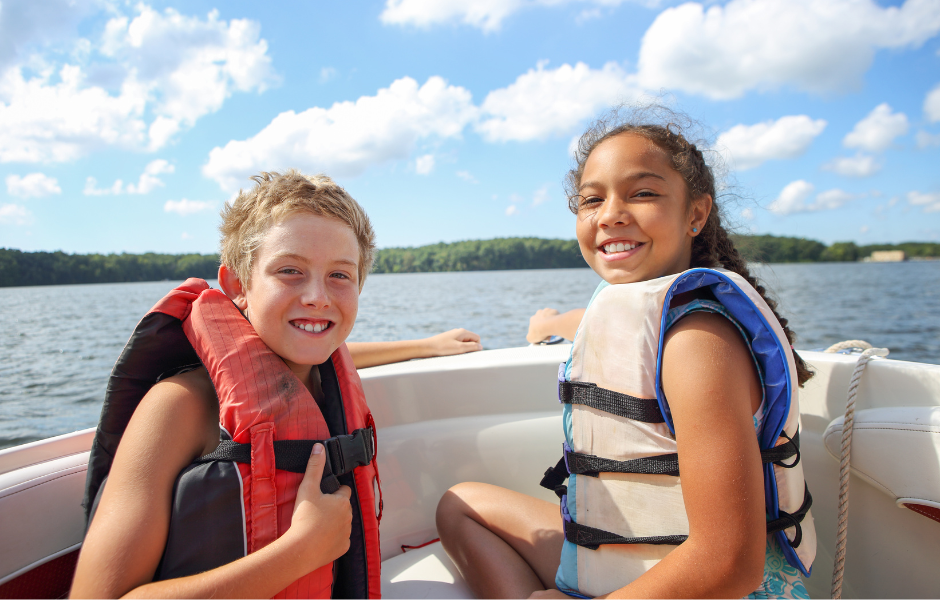Evaluating the Best Life Jackets for Your Children in the Water

We know that water safety requires putting multiple layers of protection in place. As a reminder, our organization lists those layers of protection in the form of Water Safety ABCDs, with the D standing for “Drains and Devices”. Life jacket devices are crucial for keeping kids safe. With many options to choose from, it’s important to know how to pick the safest options for your family.
How Do Life Jackets Keep Your Children Safe?
Life jackets save lives by:
- providing buoyancy for any wearer who unexpectedly enters the water.
- providing buoyancy when the wearer is no longer able to stay afloat due to fatigue, injury, or cold.
- providing buoyancy for anyone who is a weak swimmer or a non-swimmer.
Life Jacket Requirements:
The best life jackets for children are only helpful if they actually work. Here are some crucial elements to note:
- Life jackets and vests should be certified and rated by the US Coast Guard (USCG).
- Life-saving jackets and vests must be appropriate for the wearer’s fit/size.
- Too big, and the life jacket will ride up around the wearer’s face
- Too small, and the life jacket won’t keep the body afloat
- Life jackets should vary by activity. Not all life jackets are made equal.
- Quick Tip: Type 2 US Coast Guard-certified life jackets are specifically designed for supervised activities where swimmers are in calm or inland waters.
Types of Life Jackets
The US Coast Guard has 5 different life jackets, however, types 2 and 3 are the only child-approved jackets available to the public.
- Type 2 life jackets are made to turn the wearer, who may be upside down, into a position where they can breathe again. As a result, type 2 life jackets are usually the ideal choice for keeping your infant safe in the water.
- Type 3 life jackets are usually more popular with children and adults because they are less bulky, more comfortable to wear, and allow for greater freedom of movement. This type is not made with the intention of turning an unconscious person (who may be face down) up from underwater and is best for calm water activities, where there’s the chance of a quick rescue.
Buying The Right Sized Life Jacket for Your Children
Sizing is a huge factor in determining the effectiveness of your child’s life jacket. Follow the US Coast Guard’s steps below to determine whether you’ve got the right size for your child:
- Check the manufacturer’s label to ensure that the life jacket is a proper fit for your size and weight.
- Make sure the jacket is properly fastened.
- Hold your child’s arms straight up over their head.
- Grasp the tops of the arm openings and gently pull up.
- Make sure there is no excess room above the openings and that the jacket does not ride up over your child’s chin or face.
Life Jacket Pro Tips for Parents
- Keep sizing for infants in mind. US Coast Guard-approved life jackets should be labeled “Infant PFD”, and the size should be tailored to the infant’s weight. Parents should also look for mandatory features like a “heads-up” flotation pad and a strap that goes between the legs to keep the life jacket from sliding up. Learn more about infant water safety here.
- Life jacket regulations vary by state. If you’re planning a boating activity, know that state requirements vary by age across the US. In states without any laws in place, the US Coast Guard requires children under 13 on moving boats to wear a US Coast Guard-approved life jacket. See your state’s life jacket regulations to stay informed. We always recommend that your kids wear a life jacket no matter their age.
Drowning is preventable and life jackets are a crucial layer of protection for families everywhere. Read our water safety guide and our FAQ page to learn more.
